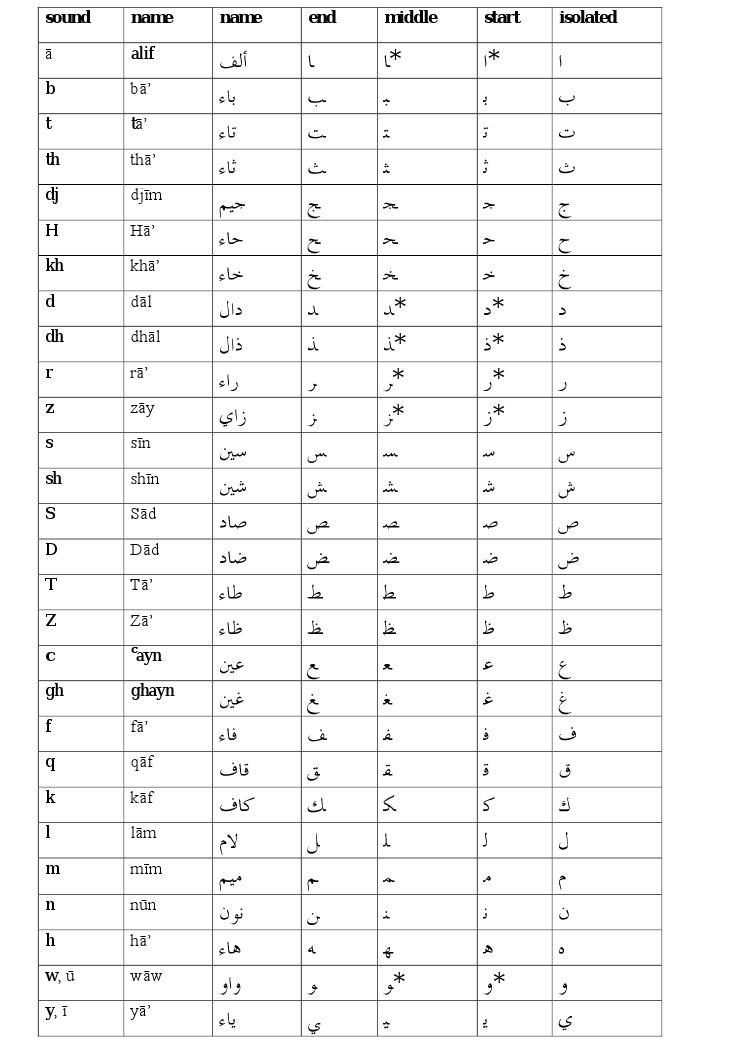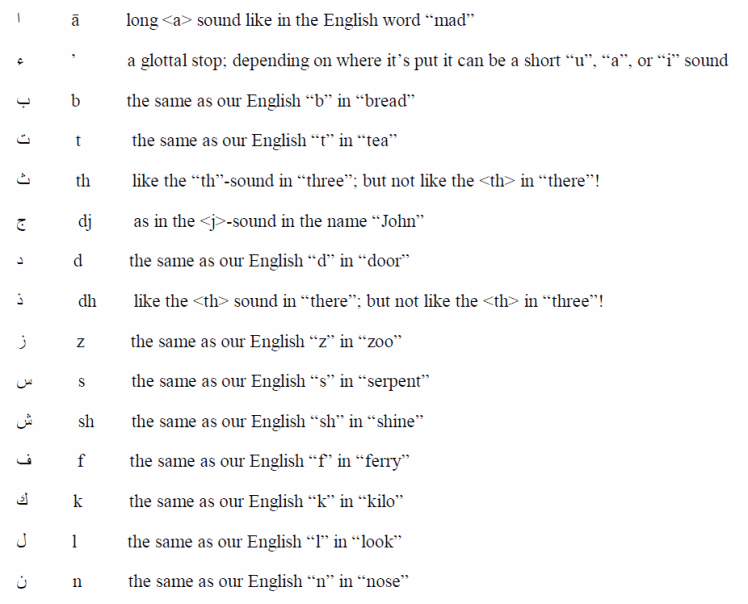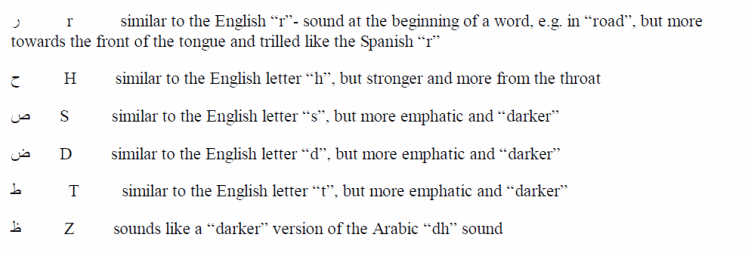Welcome to the Basic Arabic Course!
Welcome to the three-part Basic Arabic Course in which you will learn all the essentials of the Arabic language. Note, though, that this course is not meant to replace more established courses. It merely aims to give you a taste of the Arabic language and solid foundations on which to build.
Basic Arabic Course - Lesson 1:
Arabic Alphabet
| If you want to learn how to read and write all the letters of the Arabic alphabet fast and without rote learning, then check out Arabic Genie's The Magic Key To The Arabic Alphabet. |
Let's start with the Arabic alphabet, as this is the basis for the other lessons. Here are some basic characterstics of the Arabic writing system:
- The Arabic alphabet contains 28 letters.
- Arabic is written from right to left.
- In Arabic short vowels are generally not written.
- Arabic letters change their shape according to their position in a word.
Let's go through these points in more detail.
The Arabic alphabet contains 28 letters.
This means that the Arabic alphabet contains only two more letters than the English alphabet (26 letters). However, unlike English, the Arabic letters are always pronounced in the same way. In English the letter "c" is sometimes pronounced like an "s" (ceasar) and sometimes like a "k" (cucumber). Or, to take another example, "gh" is sometimes pronounced "f" (enough) and sometimes pronounced "g" (ghost). In Arabic, the letters always retain their sound.
Arabic is written from right to left.
English, of course, is written from left to right like this.
from left to right
-> -> -> -> ->
Arabic, on the other hand is written from right to left:
tfel ot thgir morf
<- <- <- <- <-
Sure, this takes some getting used to, but is not that hard with enough practice.
In Arabic short vowels are generally not written.
There are three short vowels in Arabic: a short "u" (as in "look"), a short "a" (as in "can") and a short "i" (as in "with"). Usually these short vowels are simply omitted in writing. Long vowels (such as the "ee" in "tree") are written. A sentence such as:
"The book in the tree is very ugly and rotten."
becomes
"Th bk 'n th tree 's vr 'gl 'nd rttn."
This omission of short vowels can be very difficult in the beginning, because it's difficult to guess which short vowels exactly are missing. As you learn more about Arabic grammar you will be able to "guess" the missing short vowels and pronounce unknown words.
Arabic letters change their shape according to their position in a word.
The Arabic script is essentially a cursive script, much like handwritten English. I.e. almost all the letters within a word are connected to each other. This necessitates certain changes in their shapes. If you write an English word cursively, then you will also make certain changes to the letters. For example, the letter "s" will be connected to the letter on the left with a diagonal stroke if that preceding letter is e.g. an "n".
However, in Arabic these changes can be quite drastic. Take a look at the following table that summarizes the letters in the Arabic alphabet and their shapes according to whether they are:
1) on their own (isolated),
2) at the start of a word
3) in the middle of a word
or
4) at the end of a word.

* The six letters marked with an asterisk (*) cannot be connected to the left.
You should write the letters a few times each to get a feeling for them.
| If you want to learn how to read and write all the letters of the Arabic alphabet fast and without rote learning, then check out Arabic Genie's The Magic Key To The Arabic Alphabet. |
Pronouncing the Arabic sounds
Now that you've had a first glance at the Arabic alphabet, you're ready to learn the pronunciation of the letters.
To hear the pronunciation of the Arabic letters you should head over to the Arabic letters application.
For simplicity let's divide the letters into three groups, according to their difficulty.
Easy
In this group are all the letters that are more or less exactly pronounced as their English counterparts.


Medium
These letters are still somewhat similar to English sounds, but already more difficult to pronounce.

Difficult
These Arabic letters can prove tough to pronounce for beginners. Keep at it, though, and listen to recordings of native speakers. Eventually, your throat will hurt and you'll get it right!

Putting letters together to form words
Now that you know how to write and pronounce individual Arabic letters, let's take a look at putting them together to form words.
salaam means "peace" in Arabic. To write the word start from the right and connect all the letters:
Let's take a look at another word: mumtaaz - which means "excellent" in Arabic.
For more writing exercises see Arabic Genie's The Magic Key To The Arabic Alphabet.
End of lesson 1: Arabic alphabet
In the next lesson you'll learn the basics of Arabic grammar.

